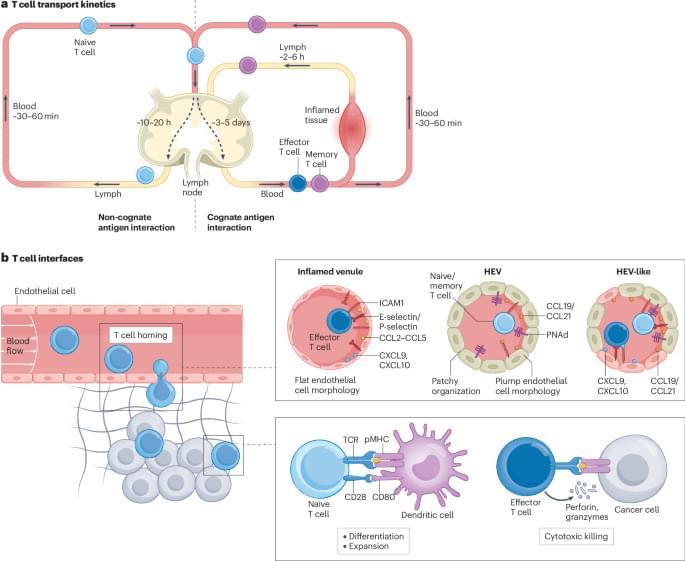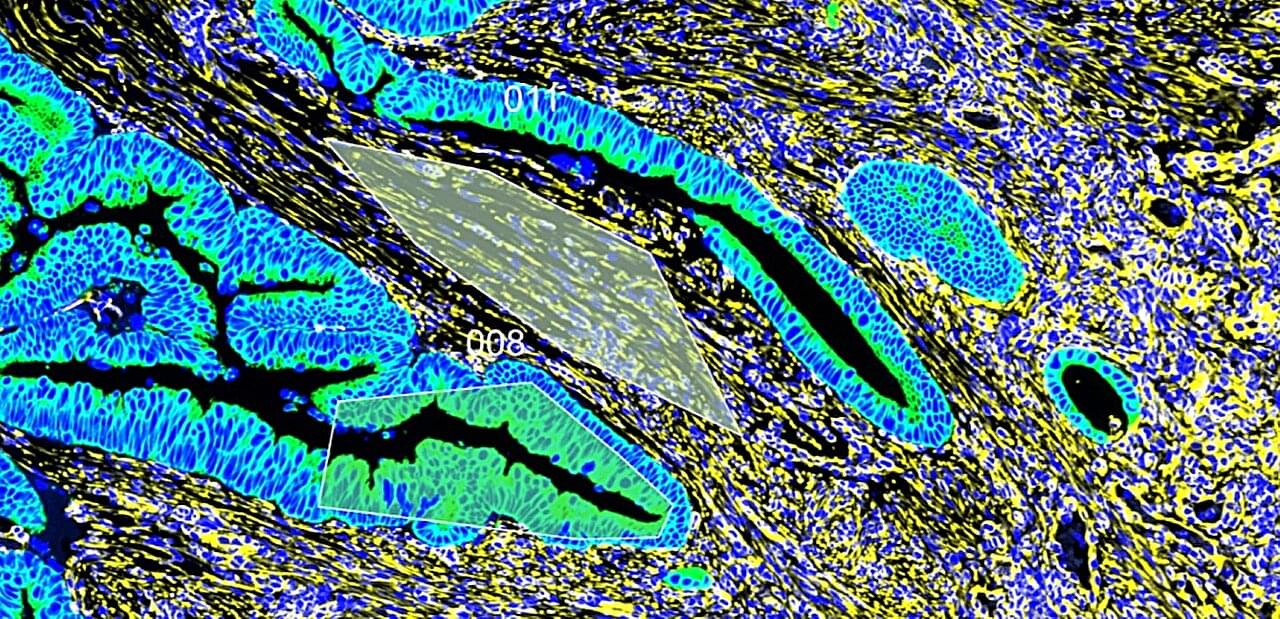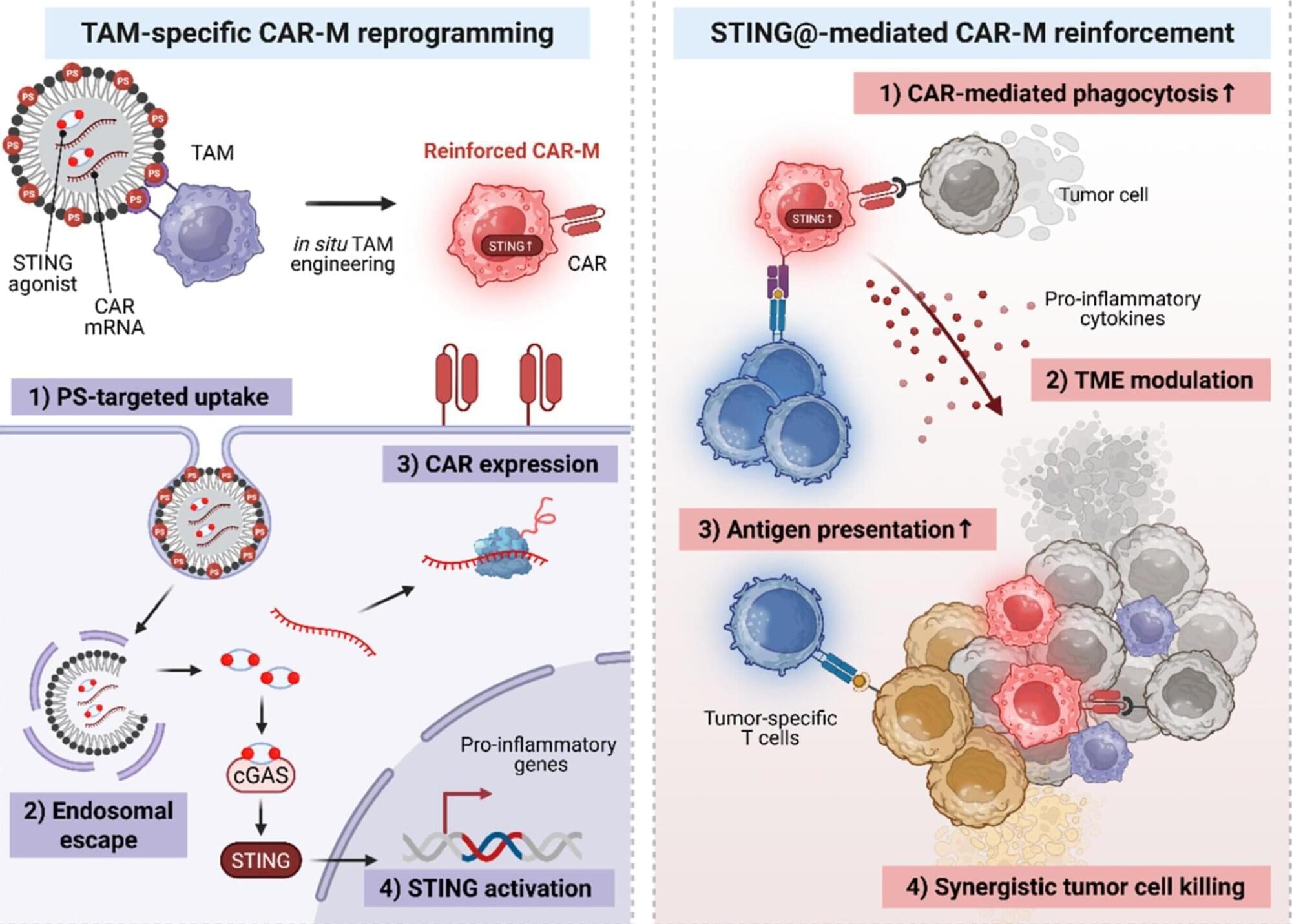Within tumors in the human body, there are immune cells (macrophages) capable of fighting cancer, but they have been unable to perform their roles properly due to suppression by the tumor. A KAIST research team led by Professor Ji-Ho Park of the Department of Bio and Brain Engineering have overcome this limitation by developing a new therapeutic approach that directly converts immune cells inside tumors into anticancer cell therapies.
In their approach, when a drug is injected directly into a tumor, macrophages already present in the body absorb it, produce CAR (a cancer-recognizing device) proteins on their own, and are converted into anticancer immune cells known as “CAR-macrophages.” The paper is published in the journal ACS Nano.
Solid tumors —such as gastric, lung, and liver cancers—grow as dense masses, making it difficult for immune cells to infiltrate tumors or maintain their function. As a result, the effectiveness of existing immune cell therapies has been limited.







